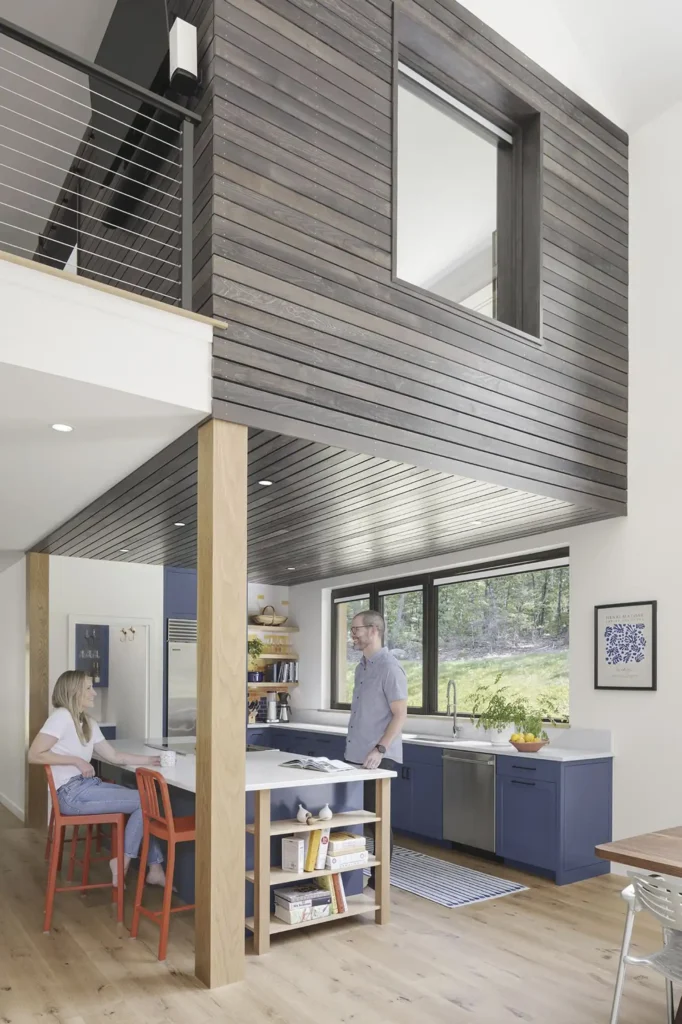Ask the Experts
Kaplan Thompson Architects

THIS MONTH’S EXPERTS ARE
Adrienne Stauffer & Olivia Bogert
operations and marketing team
The operations and marketing team at an architecture firm may not be trained designers, but we do know what it takes to make a project successful. It starts long before the first sketch—you need to find the right match.
Q. When is the best time to engage an architect?
A. If you have a project on the horizon, consider starting the selection process as early as one year before you are ready to begin design. You should factor in time for research and interviews, and give yourself enough time to contact several companies thoughtfully. Some architects may offer assistance with site selection to help you evaluate the suitability of a parcel of land, but before diving into the design, most will recommend that you have identified a specific property.
You should also consider that most skilled architects have a backlog of work, so they might not be able to start your project right away. Aim to kick off the project at least two years before the desired move-in date to ensure you have ample time to go through the design process at a comfortable pace. The design process may take between 6 and 12 months, depending on the scope of your project.
This timeline accounts for work beyond just design; there may also be several waiting periods for local permitting approvals or cost estimates from builders.
Q. Who will I be working with?
A. When evaluating your options, make sure to ask who will be on the project team. This is important because, depending on the size of the company, the person you connect with in the sales process might not be the primary designer, or even on the team at all.
Successful design depends on a deep understanding of your vision, and having a good rapport with the design team makes for a more joyful experience. Building or renovating a home is often one of the largest investments—both in terms of time and cost—in your life, so trusting your team fully is critical to a smooth ride.
Q. My partner and I have different ideas about design. How can an architect help?
A. One of the most underrated skills an architect has is the ability to address the wants and needs of multiple stakeholders. Whether it’s a summer cottage for an extended family or a home for a couple, an architect’s role is to listen to everyone, integrate all their needs and goals, and then generate a solution that melds divergent elements into a cohesive whole.
It’s not uncommon for an architect to offer an elegant solution you might not have considered. That’s one of the many benefits of working with an architect!
Q. When a firm has a clear aesthetic, how can I make it my own?
A. If you have a personal vision, no matter how fuzzy or clear it is, you should be able to see it in the final result. Every experienced architecture studio has certain aesthetic tendencies. These could stem from the founder’s initial vision, or they might arise from local preferences or specific types of construction methods, but how rigidly that spirit is applied in practice varies widely.
When talking to potential design partners, let them know which projects in their portfolio resonate most with what you have in mind, and ask how the homeowner’s vision is embodied in the final design. You can also get clues from how the architect talks about their design process and how they will incorporate your ideas from how they talk about their past clients.
A. It’s probably all of the above, but not for each client! Communication styles and methods play a significant role in the design experience, so it’s ideal to have alignment in this area. This is especially important in the early stages of design when an architect’s role is to translate concepts that you might not be accustomed to thinking about.
Not everyone is trained in reading two-dimensional drawings, and other forms of visualization might work better for you. It’s important to let your architect know when you are struggling to understand a concept, and to know that different people understand space with different representation methods. Look for an architect who is adaptable and with whom you have an easy rapport.
Q. How do you develop a realistic project timeline?
A. A lot of factors come into play when designing a home, including the availability of the architect, builder, subcontractors, and other professionals like landscape architects or interior designers. The permitting process can also be unpredictable.
Developing a realistic timeline starts with an open conversation with your architect to determine what’s typical for the scope, scale, and location of your project, and working with them to align the schedule with what is possible.



